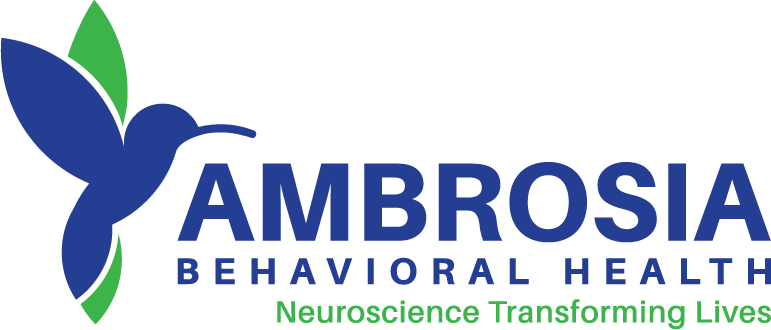It’s amazing that one little pill labeled as a pain reliever can cause such misery. But that just what hydrocodone can do. This prescription medication was formulated with pain in mind, but it has the nasty ability to trigger euphoria. That has led to rising rates of addiction, a national overdose crisis and a dire need for proper hydrocodone rehab care.
If you’re given a prescription for hydrocodone, you’ll need to know what addiction looks like and how to stay safe. And if someone you love has a problem, you might need to provide relief.
Hydrocodone is an opioid medication. It contains a synthetic version of opium, created through the chemical manipulation of poppy seeds. The National Institutes of Health says laboratories created hydrocodone in the 1920s, but it didn’t become popular until 1998, when companies started mixing the opium-like ingredient with acetaminophen.
Why was acetaminophen required? Answering that question means digging into chemistry.
All opioids, hydrocodone included, aren’t really painkillers. They don’t desensitize nerves to sensations of discomfort. Instead, they enable people to ignore pain.
Each time you take an opioid, your brain releases a flood of chemicals, and they tell your mind that something wonderful is happening. You feel calm, warm, and comforted. The pain is still there, but it’s easier for you to ignore.
Acetaminophen, on the other hand, is a painkiller. It numbs nerves, reduces inflammation, and eases discomfort. Pushing these two elements together means blocking pain while enhancing your mood. This should, in theory, provide remarkable relief.
Unfortunately, that euphoria causes chemical damage, and that leads to compulsive use. Some people who start taking opioids such as Hydrocodone can’t stop even when the pain is gone which is why rehab may be the best option. Others never had pain in the first place, but they enjoyed the way the drugs made them feel.
There are plenty of street drugs that work like this, including heroin. But as the Drug Enforcement Administration points out, hydrocodone isn’t made in clandestine labs by drug dealers. Instead, pills made for patients are stolen or misused, and they become the drug of abuse.
Dangers and Side Effects of Hydrocodone Abuse
Most hydrocodone products also contain acetaminophen, and it’s that little addition that results in significant side effects and makes them so dangerous for abuse.
Addictions tend to follow a simple progression.
- Introduction: A person takes the drug, likes it, and has no negative reaction.
- Repeated use: A person keeps taking the substance, and each dose changes the brain.
- Acclimation: The body adjusts, and cells stop reacting as they once did.
- Escalation: The person takes bigger doses to bring about the original response.
The Institute for Safe Medication Practices says people should take no more than 4000 mg of acetaminophen each day, and most hydrocodone tabs contain up to 750 mg of the stuff. At the escalation phase of addiction, some people take pills by the handful. That could cause irreparable liver damage.
At the same time, the opioid activity works on the central nervous system. You feel sleepy, and your breathing rates slow. If you take too much, you may stop breathing altogether. This is a medical emergency, and it can cause death.
The U.S. National Library of Medicine says anyone can overdose on hydrocodone, but it’s most common when doses increase. Someone with addiction consistently increases doses. The risk is always there.
Opioid Abuse Hurts Communities
Writers for Harvard Business Review say the opioid abuse issue developed due to three factors working together.
- New drugs: Pharmaceutical companies developed powerful substances that were capable of changing the brain.
- Pain management: Doctors realized that patients needed effective solutions for discomfort. In some hospitals, pain management became a patient right. That meant more drugs were required.
- Lack of oversight and accountability: Doctors could write as many prescriptions as they wanted to, with no real limits. That led to an explosion of drugs with no consequences for doctors.
Some might put the blame squarely on economic issues. When people have few job opportunities and crime rates are high, drugs offer the only escape. Others blame a lack of medication education, which enabled people to take drugs that were very dangerous with no idea of the risks involved.
No matter how the problem started, it’s only deepening with time. The results are catastrophic.
Consider car crashes. In early 2019, researchers discovered that the use of prescription opioids significantly increased the risk of fatal two-car crashes. People on these drugs struggled to stay in their lanes, and they didn’t react quickly to problems. When they crashed, people died.
Deaths due to overdoses have also skyrocketed. In 2017, more than 17,000 people died due to drugs like hydrocodone, according to the National Institute on Drug Abuse. In some counties, overdoses claim more lives than any other issue. An entire generation is fading from view due to deaths caused by these drugs.
Government Approaches to the Opioid Crisis
Opioid abuse isn’t happening in secret. The issue is both widespread and well-known. Officials are banding together to solve the problem, and while their solutions are helping, more work is needed.
Officials use a drug schedule to regulate the flow of medications. The smaller the number, the more dangerous the substance is and the harder it is to get.
In 2014, officials changed the schedule of hydrocodone drugs from Schedule III to Schedule II. This made refills impossible. Patients had to go back to their doctors for another visit and a paper refill authorization before they could get another bottle of pills.
According to Pharmacy Times, this helped. In 2014, there were 120 million hydrocodone prescriptions. In 2015, there were 93.5 million.
When drugs are harder to get, abuse rates drop. But making the drug difficult to obtain isn’t helpful for those with an addiction. It won’t make their cravings go away. Only treatment can do that, and many therapies can help people with a hydrocodone addiction.
How Is Hydrocodone Addiction Treated?
By now, many of us are familiar with addiction treatment practices. We talk with counselors and work on changing our habits. We connect with others who can help us. These treatments can and certainly do help people with an addiction to hydrocodone. But there’s one more thing that can help.
Since hydrocodone changes brain chemistry, we can use pharmaceutical solutions to address the damage. The National Institute on Drug Abuse says medications like buprenorphine and methadone work on the receptors used by hydrocodone and other opioid drugs. They can soothe both withdrawal symptoms and drug cravings, so you can focus on therapies to help you change your behavior. When used in a combined fashion like this, they’re remarkably effective.
Some treatment teams also use holistic therapies to help you recover. You might learn to drop into a yoga class when you feel stressed rather than popping a pill. You might lean on art therapy to help you process prior trauma. Also, you might dab on essential oils to help you move through a stressful meeting.
These interventions can sound silly, but they’re really helpful for some people working through a hydrocodone problem.
Do you need rehab for Hydrocodone abuse? As yourself these questions about your hydrocodone use:
- Have you tried to quit and found that you can’t?
- Is your drug use interfering with your work or your relationships?
- Do you spend most of the day thinking about getting or using drugs?
- Have you blown your monthly budget on drugs?
- Has your doctor stopped refilling your prescription because of abuse?
- Have you stopped enjoying your life because of drugs?
These are scary questions. But honest answers can help you understand how dangerous drug use really is and why you should get help.
Treatment does work. With the right program and enough time, you can recover from a hydrocodone problem.
Hydrocodone Rehab in West Palm Beach, FL
If you or your loved one are in search of a rehab center for Hydrocodone addiction in Florida, visit our admissions process page to get started today.








